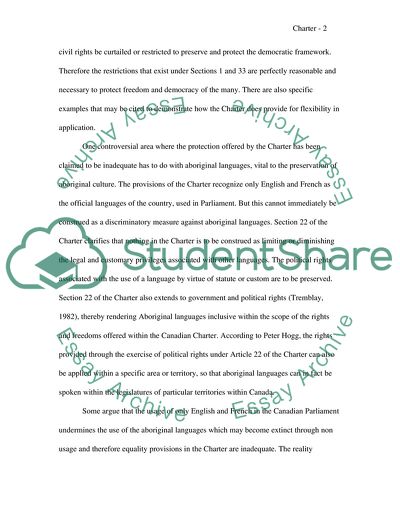Cite this document
(The Canadian Charter of Rights and Freedoms Assignment, n.d.)
The Canadian Charter of Rights and Freedoms Assignment. https://studentshare.org/law/1705282-agrue-yes-or-no-to-the-following-statementthe-canadian-charter-of-rights-and-freedoms-adequately-protects-our-civil-rights
The Canadian Charter of Rights and Freedoms Assignment. https://studentshare.org/law/1705282-agrue-yes-or-no-to-the-following-statementthe-canadian-charter-of-rights-and-freedoms-adequately-protects-our-civil-rights
(The Canadian Charter of Rights and Freedoms Assignment)
The Canadian Charter of Rights and Freedoms Assignment. https://studentshare.org/law/1705282-agrue-yes-or-no-to-the-following-statementthe-canadian-charter-of-rights-and-freedoms-adequately-protects-our-civil-rights.
The Canadian Charter of Rights and Freedoms Assignment. https://studentshare.org/law/1705282-agrue-yes-or-no-to-the-following-statementthe-canadian-charter-of-rights-and-freedoms-adequately-protects-our-civil-rights.
“The Canadian Charter of Rights and Freedoms Assignment”. https://studentshare.org/law/1705282-agrue-yes-or-no-to-the-following-statementthe-canadian-charter-of-rights-and-freedoms-adequately-protects-our-civil-rights.


